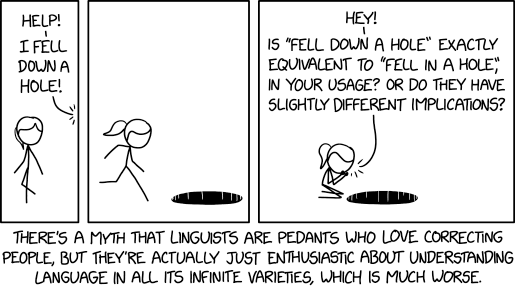Robocalls, legal interpretation, and Bryan Garner (the first in a series)
A few weeks ago, Mark’s post “Lawyers as linguists” alerted me to Facebook v. Duguid, a case now pending before the Supreme Court, which grabbed my attention for several reasons. First, the case presents an interesting linguistic issue. Second, the parties on both sides have framed their linguistic arguments in terms of three of the canons of interpretation in Reading Law: The Interpretation of Legal Texts (2012) the book coauthored Bryan Garner and the late Justice Antonin Scalia, and I’ve previously criticized the canons at issue (e.g., here). Finally, Garner himself is on the legal team representing the plaintiff, Noah Duguid.
An unusual confluence of circumstances.
Read the rest of this entry »

